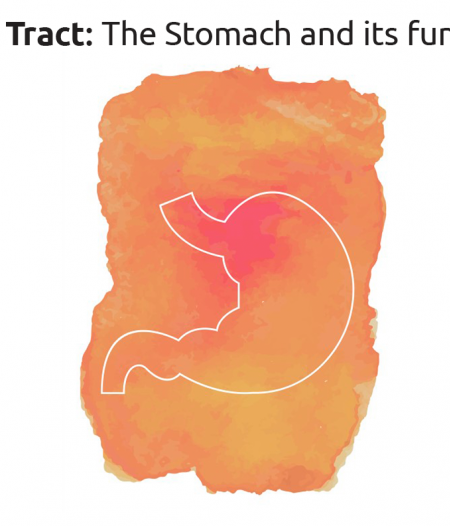Journey Through The GI Tract PART 3: The Stomach And Its Function

Let’s do a very quick recap. The digestive process begins in the mouth. It receives the food and breaks it up into small, easy-to-swallow pieces. Enzymes from the saliva break down any starch and the food passes into a long tube called the oesophagus. It carries the food bolus along its length, and contracts (peristalsis) to move food down towards the stomach.
The Stomach
The stomach is a muscular sac that is located on the left side of the abdominal cavity. This major organ acts as a storage tank for food so that the body has time to digest large meals efficiently. You’ll be surprised if you knew the quantity of food could be stored in your stomach!
“An empty, adult stomach has a capacity of 75 millilitres. But it can stretch and house up to 1 litre of food over the course of a meal. That’s over 10 times the starting capacity!”
The stomach also contains hydrochloric acid and digestive enzymes that continue the digestion of food that began in the mouth. Peristalsis continues in the stomach and is the driving force for blending food with the stomach acid. Stomach secretions help make nutrients available for absorption later in the small intestine.
Hydrochloric acid
The hydrochloric acid is strong enough to break apart tightly bound proteins into polypeptide chains (smaller chains of amino acids). It can also eliminate potentially harmful bacteria that may be present in some foods.
So, from glands that line the stomach, acid and enzymes are secreted that continue the breakdown process of the food into smaller and smaller pieces. At the end of this process, the food you placed in your mouth has been transformed into a semi-fluid paste called chyme.
Peristalsis contractions continue
Once the chyme is well mixed, waves of muscle contractions propel it through a valve called the pylorus and releases into the upper section of your small intestine (duodenum).
Once your meal is over, stomach acid secretion comes to a stop. Sometimes, may be excess acid and when too much gastric juice remains in the stomach after a meal, irritation of the stomach lining may occur. To protect itself, the stomach adjusts acid production to stay healthy and keep you comfortable. Stomach contractions continue until all the chyme from the previous meal has entered the small intestine.
Tune in next time, as we explore the next phase of digestion — the small intestine.
To find out about how to keep your digestive system working effectively, and to book your appointment, get in touch with us now.
